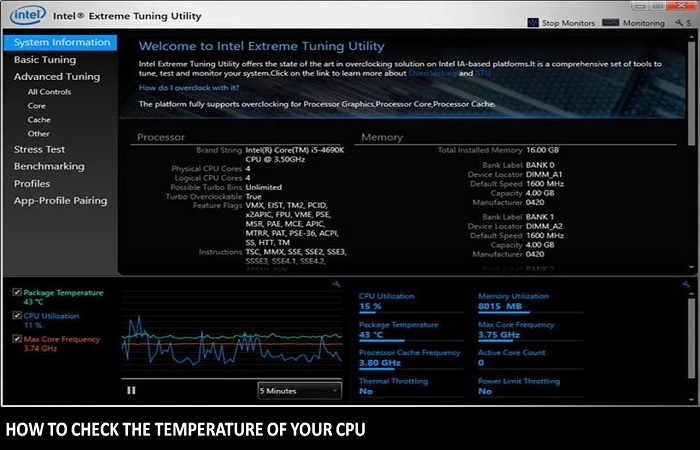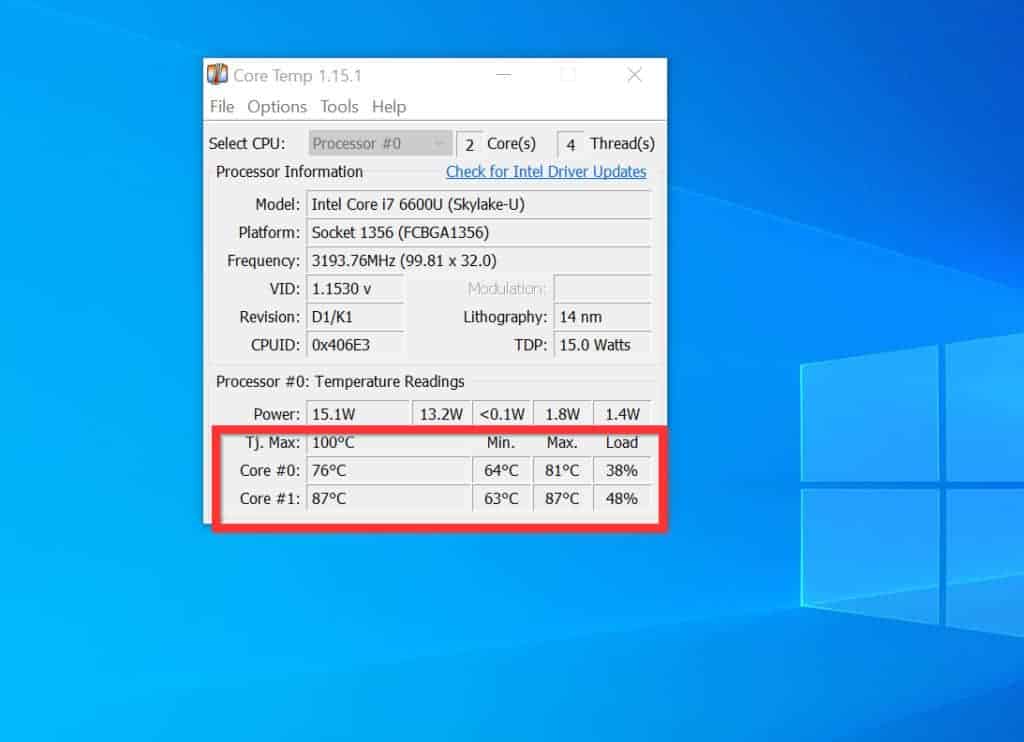

Step 5: On the reboot screen, choose Troubleshoot. Step 4: Go to Advanced startup and hit Restart now.

Step 3: On the side panel, select Recovery. Step 1: Navigate to the taskbar and select Settings. As your computer restarts, it will give you a designated key - typically F12, F2, ESC or DEL - to access your processor settings.
#Cpu temp monitor software
These software systems make sure a device’s hardware runs properly.īy rebooting your computer, you can check your CPU temp using the BIOS/UEFI software. To manually check your CPU temperature, you will need to use the basic input-output system (BIOS) or Unified Extensible Firmware Interface (UEFI) software. Unfortunately, there is no easy way to check the CPU temperature on a Windows system.
#Cpu temp monitor manual
Unfortunately, there is no easy way to check CPU temp on a Windows system, so manual checks are the only way for Windows 10 and Windows 11 users to see and monitor the temperatures of their systems.
#Cpu temp monitor how to
How to Check CPU Temp on Windows 10 and Windows 11 It is important to be aware of the CPU temp in order to keep a computer running at its best. If a CPU’s temperature is too high for too long, the processor can overheat which could lead to slower processing or system failure. These processors are arguably the most important parts of any device because they process requests and information so the device works properly.ĬPU temps can run high if the processor is being used over a long period of time or for multiple high-maintenance tasks. What is CPU Temp?ĬPU temp is the temperature of a technological device’s central processing unit. Read our guide to learn more about how to check CPU temp, why your CPU may be overheating and how to prevent this. If left untreated, high CPU temps can damage or destroy devices. While most premium protection services or VPNs won’t cause overheating, it’s possible for a lack of ventilation, dust, malfunctioning parts or background applications to be the culprit. This is because the Central Processing Unit (CPU) is overheating.

#Cpu temp monitor code
Maybe your code is working now but I am looking in the wrong place for the values.Have you ever been watching a YouTube video, searching the web, answering emails and more, all at the same time on the same device? If so, you may have noticed your device becoming hot to the touch or the fan running at increasingly high speeds. By the way, the other platform code in sensor.yaml is a template for sun azimuth and elevation. Still nothing appeared, but this time when I returned to File Editor the new code was still there. All of the changes I had made to sensor.yaml had vanished. I got a green light then, so I clicked Save, went to Developer Tools, clicked Check Configuration, and then clicked Scripts. I tried putting a "- " in front of the other “platform” line in my sensor.yaml, adjusting the subsequent lines two spaces to the right, and restoring your code to its original form. I then got “duplicated mapping key” with an up arrow seemingly pointing to “platform”. I tried removing the "- " in front of platform and I moved every other line two spaces to the left. When I put that code in my sensor.yaml, I get “end of the stream or a document separator is expected”. And while you are at it, can you explain why some lines in yaml files start with "- " and when lines need to be indented and by how much? Thanks. I hope that someone is willing to help an idiot. Furthermore, I need the other platform: entry. Probably, I do not understand how to use this code. I am expecting something to show up in Overview, but nothing does. There is a platform: template in the same file. That code still does not work, but now the complaint is that there is a duplicated mapping key – platform, I believe. One suggests adding this code to configuration.yaml: sensor:Ĭommand: 'cat /sys/class/thermal/thermal_zone0/temp' I am trying to display the temperature of the CPU.


 0 kommentar(er)
0 kommentar(er)
